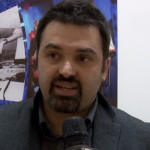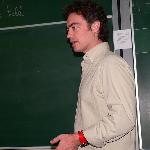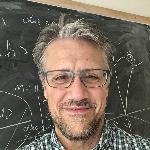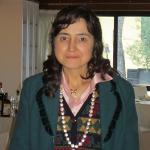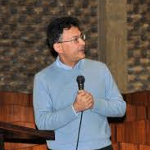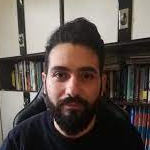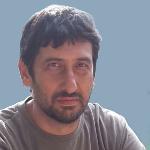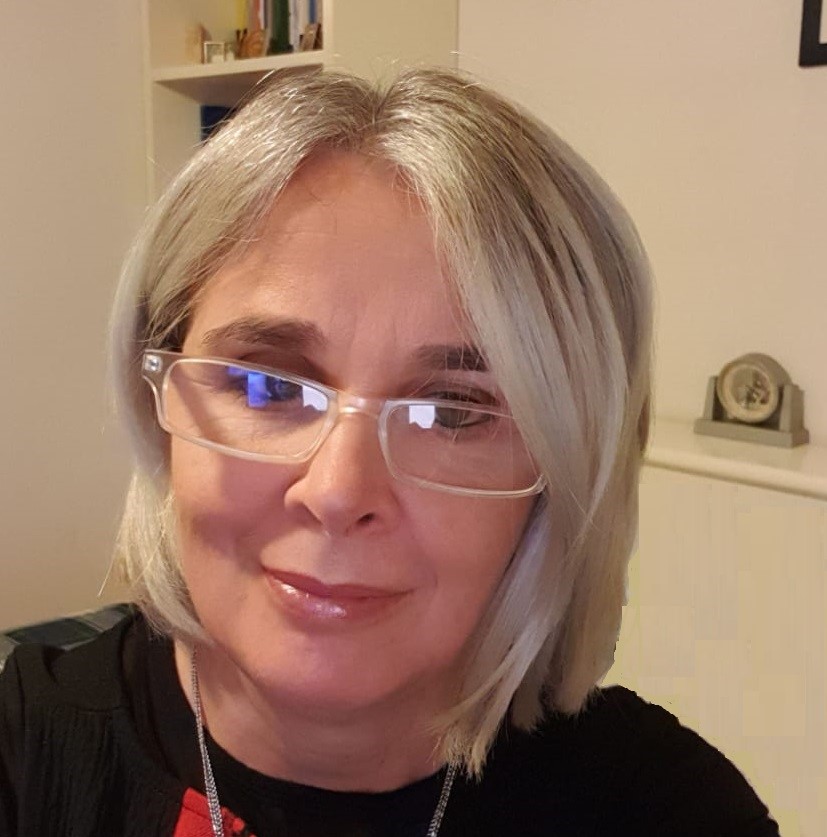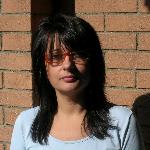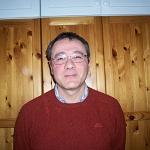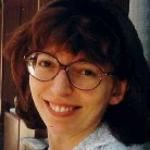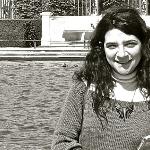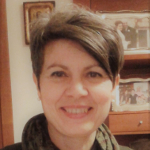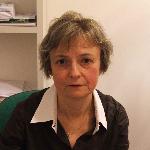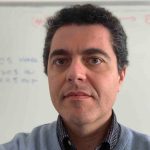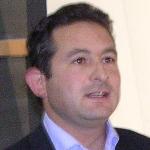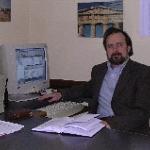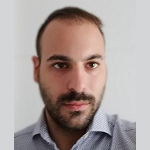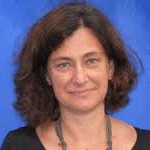Affective Computing is a cutting-edge research field at the intersection of Artificial Intelligence, Neuroscience and Psychology. The research group, headed by the scientific laboratory EMORE (Emotions and Multidisciplinary-Oriented Research on Ethical and responsible AIEMORE (Emotions and Multidisciplinary-Oriented Research on Ethical and responsible AI). The research group's main goal is the analysis and detection of human emotions, affective and cognitive states, as well as human-machine interaction. These areas are investigated through the application of advanced Artificial Intelligence techniques, which allow providing effective solutions in various application areas, including social robotics, health support, education and virtual and augmented reality, with a particular focus on applications supporting well-being and quality of life.
The research group has always paid great attention to the ethical and social implications of Affective Computing technologies, promoting the ethical responsibility of developers and researchers involved in the various projects. Ethical issues include data bias, potential future implications of the algorithms under study, applicable countermeasures against improper or criminal use and purely ethical-legal aspects.
Furthermore, the group is committed to fostering interdisciplinary collaboration with experts from different research areas, in order to foster a continuous cross-fertilization and an ever-increasing understanding of the role of emotions and affective states in human communication with technologies.
PE6_6 - Algorithms, distributed, parallel and network algorithms, algorithmic game theory
PE6_7 - Artificial intelligence, intelligent systems, multi agent systems
 Giulio Biondi
Giulio Biondi (Postdoc)
 Mattia Polticchia
Mattia Polticchia(PhD student)
The main focus of such research field are: High performance Computing (GPGPU Computing, Cloud Computing) e Quantum Computing; Artificial Intelligence (Neural Networks, Machine Learning, Signal Processing); Virtual/Augmented/Mixed and Extended Reality; Computational Science; Elearning, EAssessment.
INFO-01/A – Computer Science
ING-INF/05 - Information processing systems
PE6_11 - Machine learning, statistical data processing and applications using signal processing (e.g. speech, image, video)
PE6_12 - Scientific computing, simulation and modelling tools
PE6_4 - Theoretical computer science, formal methods, and quantum computing
PE6_5 - Cryptology, security, privacy, quantum crypto
PE6_9 - Human computer interaction and interface, visualization and natural language processing
- CYBERSECURITY
Our work in cybersecurity is aimed at improving the security of information systems. We work on e-voting systems, network security, vulnerability analysis, and methodologies to protect systems from attacks. We also study the field of secure authentication, leveraging technologies such as blockchain and advanced techniques to protect sensitive data, preventing unauthorized access and mitigating the risks of cyber attacks.
Activities related to the UniPG Cybersecurity lab (CINI node Cybersecurity lab).
The group collaborates with researchers from the University's Department of Engineering, Law and Political Science, UniCH researchers, IIT-CNR, IBM, Exprivia, etc.
INFO-01/A – Computer Science
SECS-S/06 – Applied Economy
PE1_1 - Logic and foundations
PE1_13 - Probability
PE1_14 - Statistics
PE1_16 - Mathematical aspects of computer science
PE6_4 - Theoretical computer science, formal methods, and quantum computing
PE6_5 - Cryptology, security, privacy, quantum cryptography
PE6_6 - Algorithms, distributed, parallel and network algorithms, algorithmic game theory
PE6_7 - Artificial intelligence, intelligent systems, multi agent systems
- DISTRIBUTED LEDGER TECHNOLOGIES
We focus on blockchain applications related to traceability and distributed authentication. The research concerns the use of blockchain to ensure process transparency, with a focus on food and industrial traceability. We are interested in leveraging blockchain to improve trust in transactions and security in data sharing, exploring immutability and decentralization as tools for solving complex problems in key industries. Cryptocurrencies (bitcoin, ethereum) and smartcontracts are also studied.
Activity related to the Distributed Ledger technology Group (also working group in Blockchain of the CINI National Laboratory in Cybersecurity). The group collaborates with researchers from the Department of Economics and IIT-CNR researchers.
INFO-01/A – Computer Science
STAT-04/A - Mathematical methods of economics and actuarial and financial sciences
PE1_1 - Logic and foundations
PE1_13 - Probability
PE1_14 - Statistics
PE1_16 - Mathematical aspects of computer science
PE6_4 - Theoretical computer science, formal methods, and quantum computing
PE6_5 - Cryptology, security, privacy, quantum cryptography
PE6_6 - Algorithms, distributed, parallel and network algorithms, algorithmic game theory
PE6_7 - Artificial intelligence, intelligent systems, multi agent systems
 Luca Maria Tutino
Luca Maria Tutino (PhD Student)
We work on developing models and algorithms to address problems related to environmental and social sustainability. We work on how to apply computational techniques to manage natural resources, monitor climate change, and promote sustainable practices. Research includes analyzing large-scale data to assess the environmental and social impacts of various processes, as well as exploring technological solutions to address global challenges such as climate change.
INFO-01/A – Computer Science
STAT-04/A - Mathematical methods of economics and actuarial and financial sciences
PE1_1 - Logic and foundations
PE1_13 - Probability
PE1_14 - Statistics
PE1_16 - Mathematical aspects of computer science
PE6_4 - Theoretical computer science, formal methods, and quantum computing
PE6_5 - Cryptology, security, privacy, quantum cryptography
PE6_6 - Algorithms, distributed, parallel and network algorithms, algorithmic game theory
PE6_7 - Artificial intelligence, intelligent systems, multi agent systems
The research group deals with models and technologies for e-learning and teaching support, with particular reference to models of user behavior and human-machine interaction, adaptive interactive interfaces, technologies to support mobility and disabilities, distributed architectures for elearning.
INFO-01/A – Computer Science
PE6_10 - Web and information systems, database systems, information retrieval and digital libraries, data fusion
PE6_9 - Human computer interaction and interface, visualization and natural language processing
PE6_7 - Artificial intelligence, intelligent systems, multi agent systems
 Giulio Biondi
Giulio Biondi (Postdoc)
Poisson structures are geometric structures that play a decisive role in explaining the relationships between quantum mechanics and classical Hamiltonian mechanics and are the basis for some of the most popular approaches to quantization procedures such as "deformation quantization" and geometric quantization. The study of Poisson manifold quantization using symplectic integration and producing as output the C * -algebra of convolution of a groupoid has opened new study scenarios on the relationships between geometric invariants and quantum properties. In particular, the attempt to understand the functorial properties of this construction naturally leads to consider the notion of differentiable stack and the analysis of homotopy properties, both in the proper sense and in categorial sense of the Poisson invariants.
MATH-02/B – Geometry
PE1_5 - Lie groups, Lie algebras
PE1_6 - Geometry and Global Analysis
PE1_7 - Topology
PE1_9 - Operator algebras and functional analysis
PE1_12 - Mathematical physics
The core themes of this research field are Galois Geometries, Algebraic Curves in positive characteristic and Combinatorial Graphs. In their study, several tools developed reveal to be particularly performing in the interaction both with classical mathematics (Number Theory, Algebraic Geometry, Group Theory), and with the more recent ones connected with applications to Code Theory and Cryptography, with particular reference to correcting and covering codes, to secret sharing schemes and to functions on highly non-linear finite fields. One of the main objectives is to create infinite new classes of remarkable objects in Galois spaces and / or algebraic curves and / or combinatorial graphs with many automorphisms. There are several reasons that justify this choice. First, this is consistent with the discrete analog of Felix Klein's "Erlangen Program", considered by many to be the starting point of modern geometry: organizing geometric knowledge (in our case combinatorial knowledge) in terms of group theory . Secondly, algebra is able to capture / enlighten structures that would otherwise remain hidden. Finally, combinatorial objects with a high degree of symmetry are particularly relevant in the applied field also because they can be stored more efficiently in terms of memory space. The research carried on by the group is also developing in the direction of cryptography applied to Cloud Encryption. Cloud encryption uses advanced encryption techniques to protect the data that will be used or stored in the cloud. It allows users to conveniently and securely access shared services, so that all data hosted by providers are protected with encryption. The mathematical primitives, more precisely algebraic, used in cloud encryption are intended to encrypt sensitive data without delaying the exchange of information, thus protecting critical data beyond the business IT environment.
MATH-02/A - Algebra
MATH-02/B – Geometry
PE1_2 - Algebra
PE6_5 - Cryptology, security, privacy, quantum crypto
PE1_15 - Discrete mathematics and combinatorics
PE1_3 - Number theory
PE1_4 - Algebraic and complex geometry
PE1_16 - Mathematical aspects of computer science
The group, referring to the Laboratory of Knowledge and Information Technology, successfully investigates in the field of artificial intelligence in general and with particular focus on evolutionary computing, complex networks and information retrieval, producing models, systems and computing techniques for the solution of problems ranging from combinatorial and function optimization to network immunization, complex network analysis, link prediction and sentiment analysis. The group is also specialized in the field of machine learning, data analysis and recommender systems with particular focus on neural networks, neuroevolution, adversarial machine learning and text data analysis, producing models and systems for the solution of problems ranging from network optimization, neural, object classification, adversarial machine learning, product and user recommendation systems, extrapolation of knowledge and information from texts.
INFO-01/A – Computer Science
PE6_10 - Web and information systems, database systems, information retrieval and digital libraries, data fusion
PE6_7 - Artificial intelligence, intelligent systems, multi agent systems
 Giulio Biondi
Giulio Biondi (Postdoc)
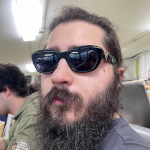 Nicolò Vescera
Nicolò Vescera (PhD student)
Our group studies how to formalize and exploit knowledge to build intelligent systems capable of reasoning, explaining decisions, and interacting with the real world. We use formal logic tools, knowledge graphs, and advanced computational techniques to extract insights from complex data and solve critical problems in an automated way.
In particular, we focus on:
Constraint Programming and constraint-based methods to support automatic decisions in complex contexts;
Computational Argumentation to represent and evaluate conflicting information, improving the reliability of decision-making systems;
Machine Learning and Explainable AI to combine learning from data and transparency in decision-making;
Interdisciplinary applications in cybersecurity, blockchain, supply chains, and intelligent distributed systems.
The group operates within the KRAR Lab (Knowledge Representation and Automated Reasoning Lab), a CINI node for Artificial Intelligence and Intelligent Systems, and a member of the Confederation of Laboratories for Artificial Intelligence Research in Europe (CAIRNE), contributing to national and international advanced research projects.
INFO-01/A - Informatica
STAT-04/A - Metodi matematici dell'economia e delle scienze attuariali e finanziarie
PE1_1 - Logic and foundations
PE1_13 - Probability
PE1_14 - Statistics
PE1_16 - Mathematical aspects of computer science
PE6_4 - Theoretical computer science, formal methods, and quantum computing
PE6_5 - Cryptology, security, privacy, quantum cryptography
PE6_6 - Algorithms, distributed, parallel and network algorithms, algorithmic game theory
PE6_7 - Artificial intelligence, intelligent systems, multi agent systems
 Luca Maria Tutino (PhD student)
Luca Maria Tutino (PhD student)The research group is concerned with the study of methods of Real Analysis and Measure Theory aimed at applications in the theory of stochastic processes, statistics, game theory and signal processing. In these fields, the theory of multifunctions and partially ordered spaces seem to be a promising tool in order to manage imprecise data.
In particular, we intend to study inequalities and convergence theorems for measures and sequences of subadditive measures, applications of the theory of abstract integration and stochastic processes in Riesz spaces and modular convergence in partially ordered spaces.
MATH-03/A - Mathematical Analysis
MATH-03/B - Probability and Mathematical Statistics
PE1_8 - Analysis
PE1_9 Operator algebras and functional analysis
PE1_13 Probability
PE1_21 - Application of mathematics in industry and society
The group deals with the development of analysis and algorithms for data science problems from an interdisciplinary perspective. Our methodology ranges from linear algebra to optimization, from statistics to uncertainty quantification, from algebra to algebraic topology.
Emphasis is placed on finding and exploiting hidden structures in the data. Examples are the use of homology for the study of complex networks and optimisation on differentiable manifolds for the computation of statistical quantities. Special attention is paid to machine learning models.
MATH-02/B - Geometry
MATH-03/B - Probability and Mathematical Statistics
MATH-04/A - Mathematical Physics
MATH-05/A -Numerical Analysis
PE1_7 Topology
PE1_12 Mathematical physics
PE1_14 Statistics
PE1_17 - Numerical analysis
PE1_18 - Scientific computing and data processing
- ELLIPTIC PROBLEMS
Problems modeled by nonlinear partial differential equations, both scalar and vectorial, appear substantially in all areas of natural, physical, chemical sciences, starting historically from well-known geometric and mechanical problems up to recent applications in the medical field and even in mathematical finance. In this area, we address the study of stationary problems for some classes of elliptic equations or inequalities associated with problems governed by nonlinear operators such as the p-Laplacian, which models non-Newtonian fluids both dilatant and pseudoplastic such as paint, blood, asphalt or toothpaste, or of non-homogeneous type such as the (p,q)-Laplacian involving critical nonlinearities. We also address the study of quasilinear inequalities of parabolic type having nonlinearities involving nonlocal terms in the spirit of the Choquard equation appearing in various fields of quantum physics and in the theory of relativity, or gradient-dependent nonlinearities with degenerate or singular weights that generalize models of population dynamics.
MATH-03/A - Mathematical Analysis
PE1_11 - Theoretical aspects of partial differential equations
PE1_12 - Mathematical physics
PE1_20 - Application of mathematics in sciences
PE1_21 - Application of mathematics in industry and society
PE1_8 - Analysis
PE1_9 - Operator algebras and functional analysis
- EVOLUTION EQUATIONS
We study hyperbolic evolution problems that arise directly from concrete physical problems. In particular:
1) models of interaction between small-amplitude acoustic waves and extended membrane-type reaction surfaces, both in a Lagrangian and Eulerian framework. They are related to the wave equation with acoustic boundary conditions, which is widely studied in the literature.
2) problems related to the wave equation with kinetic and hyperbolic boundary conditions, which model vibrations in composite systems.
MATH-03/A - Mathematical Analysis
PE1_11 - Theoretical aspects of partial differential equations
PE1_12 - Mathematical physics
PE1_20 - Application of mathematics in sciences
PE1_21 - Application of mathematics in industry and society
PE1_8 - Analysis
PE1_9 - Operator algebras and functional analysis
The group deals with the study of mathematical models of phenomena in the physical, biological, economic and techno-food fields through a combination of topological methods and functional analysis tools, as well as multivocal analysis. The mathematical formalization naturally leads to consider both differential and integro-differential equations or inclusions subject to various kinds of initial conditions (such as periodic, antiperiodic, multipoint and mean value problems), to pulses or with the presence of delay. The results obtained, that range from the determination of the existence and uniqueness of solutions, to their stability or continuous dependence, find applications to population dynamics, gas kinetic theory, portfolio theory, sterilization problems, heat treatments, microfiltration and clarification of fluids and study of rain infiltration in the soil.
MATH-03/A – Mathematical Analysis
PE1_8 - Analysis
PE1_6 - Topology
PE1_13 - Probability
PE1_20 - Application of mathematics in sciences
PE1_21 - Application of mathematics in industry and society
The focus concerns the study of the computational complexity of optimization problems defined in various contexts, including communications and / or processing networks. The approach is to propose optimal, approximating and heuristic algorithms in various applicative contexts including the need to disseminate and / or retrieve data. Wireless networks, ad hoc networks and social networks are being established and discontinued within a short time in order to take advantage of local and instant information. Examples of such networks may concern the need to retrieve environmental information through networks of sensors, drones, or mobile devices such as robots or more commonly used ones such as laptops, smartphones, smartwatches and tablets. The diffusion of such networks is certainly promoted by technological advancement and by the spread of increasingly performing communication devices. These networks are now also used in agriculture where monitoring based on automatic data collection facilitates the automation of decision-making processes. The research group that deals with these issues also avails itself of the collaboration of various researchers from other Italian and foreign Universities. The Haly-id project is highlighted haly-id.
INFO-01/A – Computer Science
PE6_6 - Algorithms, distributed, parallel and network algorithms, algorithmic game theory
PE6_2 - Computer systems, parallel/distributed systems, sensor networks, embedded systems, cyber-physical systems
PE7_8 - Networks (communication networks, sensor networks, networks of robots, etc.)
The research activity is mainly aimed at the study of mathematical methods for modeling, simulation and analytical study of systems consisting of many interacting elements. The main objective is the derivation of a mathematical theory suitable to provide the general framework for the study of these systems. In particular, of a mathematical structure suitable to capture the key characteristics of complexity of living systems and, therefore, specific models by inserting the dynamics of interactions. Applications are aimed at the dynamics of collective learning in the biological, economic and social fields.
MATH-04/A - Mathematical Physics
MATH-03/B - Probability and Mathematical Statistics
PE1_12 - Mathematical physics
PE1_10 - ODE and dynamical systems
PE1_21 - Application of mathematics in sciences
PE3_15 - Statistical physics: phase transitions, condensed matter systems, models of complex systems, interdisciplinary applications
The Research Group deals with the study of problems and methods in Approximation Theory, Integral Transforms and Real Analysis, as well as some of their applications to signal and image reconstruction and processing.
The topics mainly concern with the study of various families of operators, both integral and discrete, and their approximation properties in several function spaces including, in addition to the classical Lebesgue spaces, Orlicz, modular, BV, Sobolev and fractional Sobolev spaces, obtaining estimates, convergence results, on the order of approximation, inverse results and saturation theorems. Among the considered operators, special attention is given to sampling-type operators, in their generalized, Kantorovich and Durrmeyer-type versions, that have strong connections with signal and image reconstruction problems. In addition, operators of interest include neural network-type operators, that are very attractive because of their relationship with the well-known theory of artificial neural networks, underlying artificial intelligence. The techniques used in order to study the mentioned research problems fall within the areas of Functional Analysis, Measure Theory, Approximation Theory and Fourier Analysis.
With respect to the applicative aspects, the developed theoretical models are implemented to provide mathematical and numerical algorithms for digital image processing aimed to solve concrete problems mainly of a medical and engineering nature. Indeed, it is now evident that there is a strong need in almost all the applied areas in the medical and industrial fields for mathematical modeling of processes as well as their algorithmic application. Science, including experimental science, needs very refined and rigorous scientific tools that require specific mathematical skills. The group refers to the Imaging and Computer Vision (ICV) laboratory, based in the Department of Mathematics and Computer Science, that was also created with the idea of developing research in this area. Several researchers in the group are among the founding members of the Italian Mathematical Union Working Group called “Approximation Theory and Applications - T.A.A.”, that brings together Italian researchers working on such topics.
The group has a strong interdisciplinary character and has developed deep collaborations and research in the medical field (mathematical models and algorithms for the study of aneurysmal pathologies, retinal pathologies and brain pathologies for the search of biomarkers for Alzheimer's disease) and in the engineering field (mathematical models for the seismic vulnerability of buildings, for the study of thermal and acoustic bridges), carrying on intensive collaborations with the Departments of Civil and Environmental Engineering (DICA), Engineering (DI) and Medicine and Surgery at the University of Perugia, and with the Radiology and Health Physics Section of the Santa Maria della Misericordia Hospital in Perugia. The applicative nature of this research has also led to active and fruitful collaborations with several companies in the area and beyond.
MATH-03/A - Mathematical Analysis
MATH-05/A - Numerical Analysis
PE1_8 - Analysis
PE1_20 - Application of mathematics in sciences
PE1_21 - Application of mathematics in industry and society
(Postdoc)
 Maria Rosaria Natale
Maria Rosaria Natale(Postdoc)
Analysis of the contribution of the conditional probability approach consistent with merging techniques and aggregation of different information sources, in line with what has already been introduced in several recent contributions on the so-called Statistical Matching, on Probabilistic Databases and on Fuzzy aggregation operators. Search for areas of application of classification techniques, in particular under partial information, which allow the identification of risk conditions based on techniques of Fuzzy rules or aid to decisions with techniques of Rough Set. The group also studies techniques and results of algebraic geometry for the characterization and analysis of probabilistic models based on partial assignments of coherent conditional probabilities. This approach is based on what has been proposed in the literature for the selection of Bayesian network models, in particular the so-called "naive" ones, represented by varieties of the secants of a Segre variety, extending it to the case of more general models with the presence of logical constraints (structural zeros) and only partial or "extreme" assignments (conditioners of null probability). The translation of these constraints into algebraic-geometric properties could lead to properties and characterizations that have not yet been explored.
MATH-03/B – Probability and Mathematical Statistics
STAT-04/A - Mathematical methods of economics and actuarial and financial sciences
MATH-02/A - Algebra
MATH-02/B - Geometry
PE1_13 - Probability
PE1_16 - Mathematical aspects of computer science
PE6_7 - Artificial intelligence, intelligent systems, multi agent systems
SH4_7 - Reasoning, decision-making; intelligence
PE1_2 - Algebra
PE1_6 - Geometry and Global Analysis
PE1_14 - Statistics

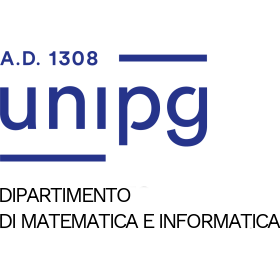

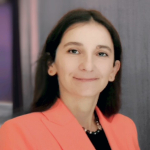
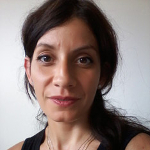
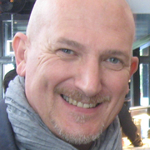

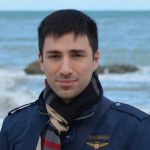 Damiano Perri
Damiano Perri 


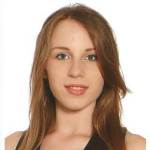 Chiara Luchini
Chiara Luchini 